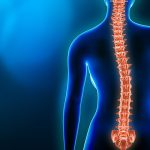Our physiotherapy clinic PhysioNow has 9 locations to serve you across the GTA, from Burlington to Etobicoke Physiotherapists can improve your health by being champions of fitness and wellness. They are experts in a wide variety of topics and can help in many different areas. The following is a list of ways your physiotherapist can improve your health! 1. Prevention Physiotherapists work to prevent injuries and physical health issues through education and awareness. For example, they may provide guidance on proper ergonomics, posture, and exercise habits to reduce the risk of developing pain, injuries and chronic conditions. 2. Rehabilitation Sometimes, accidents happen and injuries can’t be avoided. Physiotherapists help individuals recover from injuries, surgeries, and medical conditions. They use various techniques, therapeutic exercises, and treatments to restore physical function, mobility, and strength. 3. Pain Management Physiotherapists help manage and alleviate pain, whether it’s caused by…
Read More





